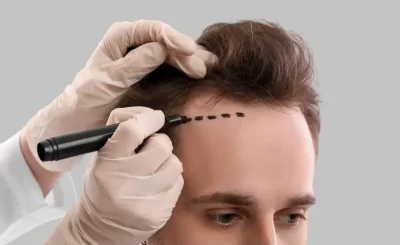A balanced, nutritious diet and regular exercise are frequently recommended as the foolproof method for developing a trim and toned physique. While it is true that a healthy diet and regular exercise are necessary for overall wellbeing, many people find that despite following a strict diet and regular exercise, their bodies remain resistant to change. For medical or aesthetic reasons, individuals may choose to undergo coolsculpting or bariatric surgery.
Despite their similarities in leading to an improved body appearance and increased self-confidence., coolsculpting and bariatric surgery are two distinct procedures with different goals. You can choose the best course and surgeon for your needs once you understand the crucial differences among the two.
Coolsculpting
The only FDA-approved non-surgical method of fat reduction or body shaping based on scientific principles is coolsculpting, also known as cryolipolysis. Compared to the conventional diet and exercise plan, this revolutionary method is significantly faster and more efficient at eliminating stubborn fat[1]. While eating and exercise are still necessary to maintain long-term health and trimness, coolsculpting shapes certain parts of the body to give it the appropriate shape. Coolsculpting is a non-invasive technique, which does not involve anesthesia, and has no recovery period[2].
How Does Coolsculpting Work?
The area of your body being treated is held between two paddles by the doctor using the Cryolipolysis device, whose temperature is then rapidly dropped. Up to 25% of the fat cells in the area being treated are destroyed throughout the process, which lasts 35 to 75 minutes while the paddles are in place.
Following this, the fat cells start the cell-death process. It takes your body’s natural cleansing process anything from a few weeks to two months to progressively eradicate them. Even though the ultimate effects of this treatment might not become apparent for one or two months, they can still be very important. To get the desired effects, some folks might need more than one session.
When to Consider Coolsculpting?
If you maintain a nutritious diet and a consistent workout schedule but are still battling with stubborn fat deposits that won’t go away, coolsculpting may be for you.
Bariatric Surgery
Obesity or weight reduction surgery, commonly referred to as bariatric surgery, is a part of the multimodal approach to treating obesity, which also includes multidisciplinary evaluation and diagnosis, conservative and surgical therapies, and lifelong follow-up care[3].
Bariatric surgery, also known as weight loss surgery, entails exacting procedures performed on your digestive system. Either your stomach is made smaller (a procedure known technically as a Roux-en-Y Gastric Bypass), or a portion of it is removed (a procedure known technically as a Gastric Sleeve Surgery). The risks associated with your heart, blood pressure, liver, and probability of developing sleep apnea are all reduced after bariatric surgery[4].
How Does Bariatric Surgery Work?
The Roux-en-Y Gastric Bypass and the Gastric Sleeve Surgery are the two main types of bariatric or weight loss surgery. The Roux-en-Y Gastric Bypass treatment aims to reduce your food intake, which will reduce your body’s absorption of calories. Your stomach is made smaller with this treatment, and a straight link is formed from the stomach to the lower part of the small intestine. In the Gastric Sleeve treatment, 75% of your stomach must be removed, leaving only a little gastric tube or sleeve behind[5].
When to Consider Bariatric Surgery?
If you struggle with being overweight, you might be a candidate for bariatric surgery. The majority of people who undergo bariatric surgery have a body mass index (BMI) of 35 or higher, are significantly overweight, are having trouble with daily activities, or both.
Coolsculpting vs. Bariatric Surgery
- Coolsculpting does not initiate weight loss; bariatric surgery does.
By physically reducing the size of the stomach, weight loss operations like the lap band and gastric sleeve or bypass surgery limit a patient’s caloric intake. If a person is really overweight and struggles with portion control, this can help them shed pounds safely. Contrarily, weight loss via body contouring surgery won’t exceed the weight of tissues that are removed because it has no impact on hunger, digestion, or metabolism.
- Coolsculpting is mostly cosmetic; weight loss surgery is medical.
The purpose of weight loss surgery is to simply help you lose weight by reducing your hunger; it is not designed to directly enhance your appearance. Body contouring is primarily done to create a more visually attractive appearance rather than to correct or enhance physical health.
- Body sculpting can improve body proportions and reduce extra skin, but weight reduction surgery cannot.
Following bariatric weight reduction surgery, many patients experience extra, loose skin as a result of their rapid weight loss. In order to remove extra skin and attain a more visually attractive form, patients frequently decide to have body contouring after weight reduction surgery.
In the end, the option for treatment that best suits the patient’s aesthetic objectives and medical needs will win out. The greatest approach to choose the operation that’s perfect for you is without a doubt to speak with an experienced board-certified surgeon about your weight goals. Learn more about coolsculpting and bariatric surgery by booking a consultation with one of our experts at Medcare!














